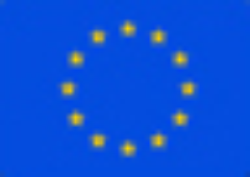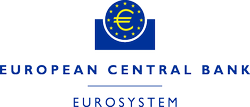
Regulator
European Central Bank (ECB)

https://www.ecb.europa.eu/ecb/html/index.en.html
Switchboard: +49 69 1344 0
Public enquiries: +49 69 1344 1300 / info@ecb.europa.eu
ECB Contacts, here.
The first 10 years
June 1st, 1998: founding of the ECB
The European Central Bank came into being on 1 June 1998. This gave it seven months to prepare for the unprecedented tasks of
- replacing the currencies of a group of sovereign states with a single currency, and
- devising a monetary policy for the nascent euro area.
Since that time, the ECB as the "captain" of the Eurosystem team – the central banking system of the euro area – has been conducting monetary policy for the countries in the currency union. Its primary objective is price stability over the medium term, because stable prices form the basis for sustainable economic growth and prosperity in Europe.
June 1st, 1998 also saw the establishment of the "European System of Central Banks", the institutional framework that comprises the ECB and the central banks of all the EU's Member States.
10th anniversary of the euro and the Eurosystem
January 1st, 2009 was the 10th anniversary of the euro and of the Eurosystem. Exactly ten years previously
- the euro was introduced, first as an electronic means of payment (the banknotes and coins came into circulation in 2002),
- the ECB and the central banks of the EU countries adopting the euro came together to form the "Eurosystem", and
- monetary authority for the new currency was transferred to the Governing Council of the ECB.
Today, the single currency is used in an area that stretches from Cyprus to Ireland and from Portugal to Finland. More than half of the EU's Member States have already adopted the euro.
ECB, ESCB and the Eurosystem
Since 1 January 1999 the European Central Bank (ECB) has been responsible for conducting monetary policy for the euro area - the world’s largest economy after the United States.
The euro area came into being when responsibility for monetary policy was transferred from the national central banks of 11 EU Member States to the ECB in January 1999. Greece joined in 2001, Slovenia in 2007, Cyprus and Malta in 2008, Slovakia in 2009, Estonia in 2011, Latvia in 2014 and Lithuania in 2015. The creation of the euro area and of a new supranational institution, the ECB, was a milestone in the long and complex process of European integration.
To join the euro area, the 19 countries had to fulfil the convergence criteria, as will other EU Member States prior to adopting the euro. The criteria set out the economic and legal preconditions for countries to participate successfully in Economic and Monetary Union.
European Central Bank
The legal basis for the single monetary policy is the Treaty on the Functioning of the European Union and the Statute of the European System of Central Banks and of the European Central Bank. The Statute established both the ECB and the European System of Central Banks (ESCB) as from 1 June 1998. The ECB was established as the core of the Eurosystem and the ESCB. The ECB and the national central banks together perform the tasks they have been entrusted with. The ECB has legal personality under public international law.
European System of Central Banks
The ESCB comprises the ECB and the national central banks (NCBs) of all EU Member States whether they have adopted the euro or not.
Eurosystem
The Eurosystem comprises the ECB and the NCBs of those countries that have adopted the euro. The Eurosystem and the ESCB will co-exist as long as there are EU Member States outside the euro area.
Euro area
The euro area consists of the EU countries that have adopted the euro.
Decision making
The Governing Council
The Governing Council is the main decision-making body of the ECB. It consists of:
- the six members of the Executive Board, plus
- the governors of the national central banks of the 19 euro area countries.
Responsibilities
- to adopt the guidelines and take the decisions necessary to ensure the performance of the tasks entrusted to the ECB and the Eurosystem;
- to formulate monetary policy for the euro area. This includes decisions relating to monetary objectives, key interest rates, the supply of reserves in the Eurosystem, and the establishment of guidelines for the implementation of those decisions.
- in the context of the ECB new responsibilities related to banking supervision, to adopt decisions relating to the general framework under which supervisory decisions are taken, and to adopt the complete draft decisions proposed by the Supervisory Board under the non-objection procedure.
Meetings and decisions
The Governing Council usually meets twice a month at the ECB’s premises in Frankfurt am Main, Germany.
The Governing Council assesses economic and monetary developments and takes its monetary policy decisions every six weeks. At the other meetings, the Council discusses mainly issues related to other tasks and responsibilities of the ECB and the Eurosystem. To ensure the separation of the ECB’s monetary policy and other tasks from its supervisory responsibilities, separate meetings of the Governing Council are held.
The monetary policy decision is explained in detail at a press conference held every six weeks. The President, assisted by the Vice-President, chairs the press conference.
In addition, the ECB publishes regular accounts of the Governing Council’s monetary policy meetings before the date of the next one.
How do voting rights rotate on the ECB Governing Council?
The accession of Lithuania to the euro area on 1 January 2015 triggered a system under which National Central Bank Governors take turns holding voting rights on the Governing Council.
The Executive Board
The Executive Board consists of:
- the President
- Vice-President and
- four other members
All members are appointed by the European Council, acting by a qualified majority.
Responsibilities
- to prepare Governing Council meetings;
- to implement monetary policy for the euro area in accordance with the guidelines specified and decisions taken by the Governing Council. In so doing, it gives the necessary instructions to the euro area NCBs;
- to manage the day-to-day business of the ECB;
- to exercise certain powers delegated to it by the Governing Council. These include some of a regulatory nature.
The General Council
The General Council comprises
- the President of the ECB;
- the Vice-President of the ECB;
- the governors of the national central banks (NCBs) of the 28 EU Member States.
In other words, the General Council includes representatives of the 19 euro area countries and the 9 non-euro area countries.
The other members of the ECB's Executive Board, the President of the EU Council and one member of the European Commission may attend the meetings of the General Council but do not have the right to vote.
Responsibilities
The General Council can be regarded as a transitional body. It carries out the tasks taken over from the European Monetary Institute which the ECB is required to perform in Stage Three of Economic and Monetary Union on account of the fact that not all EU Member States have adopted the euro yet.
The General Council also contributes to:
- the ECB's advisory functions;
- the collection of statistical information;
- the preparation of the ECB's annual report;
- the establishment of the necessary rules for standardising the accounting and reporting of operations undertaken by the NCBs;
- the taking of measures relating to the establishment of the key for the ECB's capital subscription other than those laid down in the Treaty;
- the laying-down of the conditions of employment of the members of staff of the ECB; and
- the necessary preparations for irrevocably fixing the exchange rates of the currencies of the "EU Member States with a derogation" against the euro.
In accordance with the Statute of the European System of Central Banks and of the European Central Bank, the General Council will be dissolved once all EU Member States have introduced the single currency.
Supervisory Board
The Supervisory Board consists of:
- a Chair (appointed for a non-renewable term of five years)
- a Vice-Chair (chosen from among the members of the ECB’s Executive Board)
- four ECB representatives
- representatives of national supervisors
Where the national supervisory authority designated by a Member State is not a national central bank (NCB), the representative of the competent authority may be accompanied by a representative from their NCB.
Capital subscription
The capital of the ECB comes from the national central banks (NCBs) of all EU Member States.
The NCBs’ shares in this capital are calculated using a key which reflects the respective country’s share in the total population and gross domestic product of the EU. These two determinants have equal weighting. The ECB adjusts the shares every five years and whenever a new country joins the EU. The adjustment is made on the basis of data provided by the European Commission.
Since the start of Stage Three of Economic and Monetary Union on 1 January 1999 the capital key has changed six times: a five-yearly update was made on 1 January 2004, on 1 January 2009 and again on 1 January 2014; additional changes were made on 1 May 2004 (when the Czech Republic, Estonia, Cyprus, Latvia, Lithuania, Hungary, Malta, Poland, Slovenia and Slovakia joined the EU), on 1 January 2007 (when Bulgaria and Romania joined the EU) and on 1 July 2013 (when Croatia joined the EU).
Tasks
The tasks of the European System of Central Banks (ESCB) and the Eurosystem are laid down in the Treaty on the Functioning of the European Union. They are specified in the Statute of the European System of Central Banks and of the European Central Bank. The Statute is a protocol attached to the Treaty.
The Treaty on the Functioning of the European Union generally refers to the ESCB rather than to the Eurosystem, since it was drawn up on the premise that all EU Member States would eventually adopt the euro. The Eurosystem is made up of the ECB and the national central banks (NCBs) of the EU Member States whose currency is the euro, whereas the ESCB comprises the ECB and the NCBs of all EU Member States (Article 282(1) of the Treaty). As long as there are EU Member States whose currency is not the euro, it will be necessary to make a distinction between the Eurosystem and the ESCB.

comments are disabled for this article